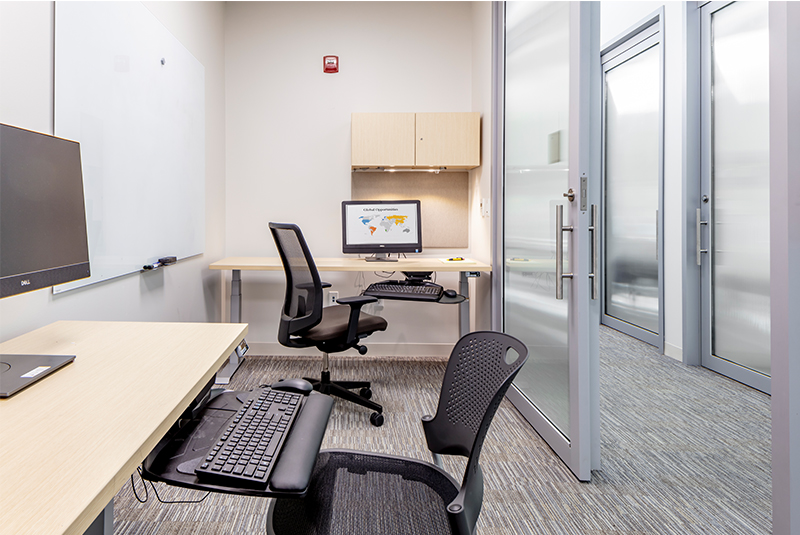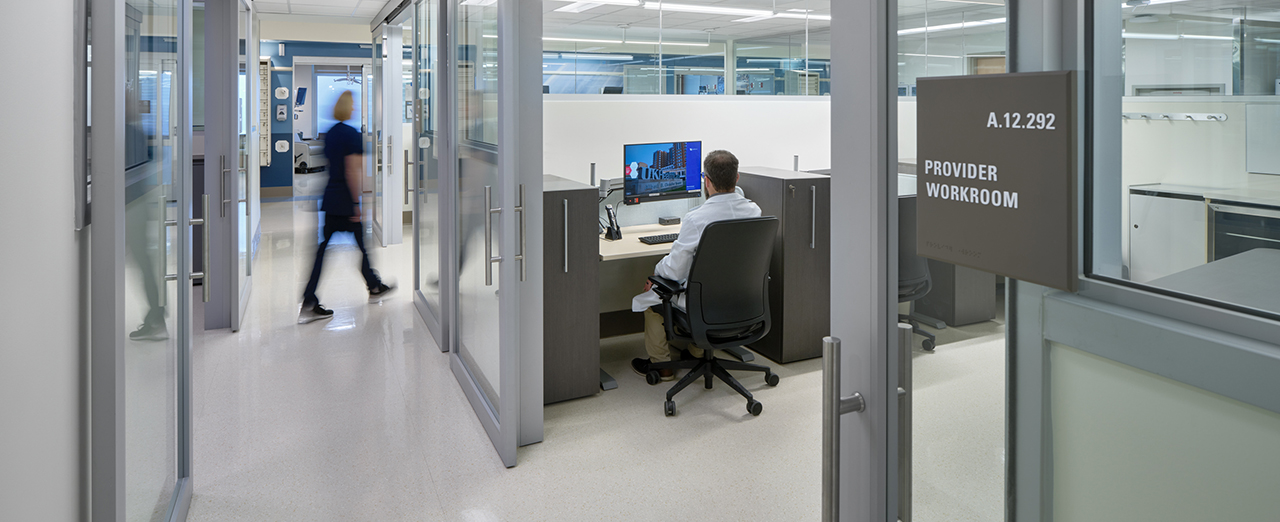
The following five considerations will help guide project owners enter the conversation around door specification, allowing better communication between architects, specifiers and end-users.
1. Understand potential building code and accessibility requirements
Building codes and Americans with Disability Act (ADA) accessibility standards can influence not only what type of door can be used in a space but also the hardware, its opening width, the materials it uses and much more. Before choosing a door system, project owners are encouraged to work with designers and specifiers to ensure commercial sliding doors meet current building code and accessibility requirements for a particular application.
2. Detail space-use and flexibility needs
Design flexibility and space-efficiency are often key drivers in new construction and renovations. Commercial sliding doors can save up to 30 square feet per door to give designers the freedom to plan more occupant centered features—from client meeting rooms to collaborative spaces and more.
Flexible openings such as oversized commercial sliding doors allow adjacent rooms to open into one, large space while offering the versatility of smaller more private separated environments when the need arises. These systems allow interior spaces to adapt to the needs of several types of work, all while maximizing the amount of use square footage within a building.
3. Determine functionality, including access control
Interior doors are increasingly being called to provide multiple forms of functionality. This can range from visual and acoustic privacy to improved building hygiene. While commercial sliding doors are often specified for their ability to provide space-saving and accessible openings throughout the built environment, they can also be integrated into access control systems to ensure physical security.
Taking functionality a step further, AD Systems’ AutoMotion™ automatic sliding door system is fully compatible with a variety of activation devices as well as safety and security accessories, including hands free wave sensors and access control integration. And because automatic sliding doors operate at set speeds and require minimal physical effort for opening and closing, they can also contribute to a more accessible building overall.
4. Consider cost of routine maintenance
Door systems can be a high price point item within the built environment. While this can be due to their multiple components, it can also be attributed to their volume within a building. Doors repeat—sometimes over 300 times within a project. Not only can this represent a substantial upfront cost, it can foreshadow continued costs for upkeep.
This makes specifying systems that are durable, easy-to-maintain and consistent throughout a project highly important. When commercial door manufacturers have a proven track record of providing high-value systems, they can help minimize labor needed to maintain doors and streamline any work necessary for repair and replacement in the case of atypical damage.
5. Choose a manufacturer that can provide multiple door options
Door manufacturers can influence the value of a door system beyond maintenance considerations. When commercial sliding door manufacturers can provide multiple door types, from standard sliding doors to telescoping systems and even swing doors, they can streamline specification, shipping and installation.
This can help building professionals find the right door for an opening. It can also help project owners achieve consistency within their buildings—this can be key especially for locations with high security demands and in order to minimize construction maintenance costs.
Finding the market differentiator in door manufacturers
Selecting the right door for a commercial space can be a complicated endeavor, but it does not have to be. Commercial sliding doors can solve several challenges in these projects while also contributing a number of design and functional benefits. Choosing these systems from industry-leading manufacturers can help business owners find the right solutions for their offices both now and in the future.







